With the right camera lens and the right distance, we can “focus through” the fencing that surrounds the outdoor habitats so the fencing disappears or turns into blurs in the foreground.
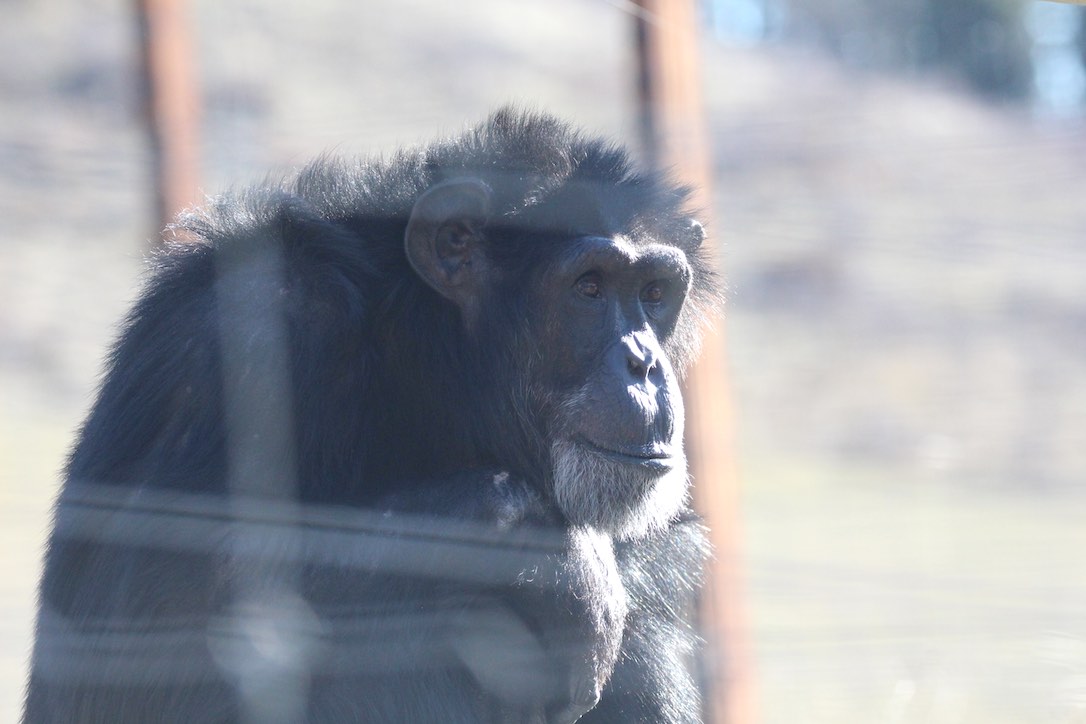
It’s a trick of the camera. The fencing doesn’t actually go away.
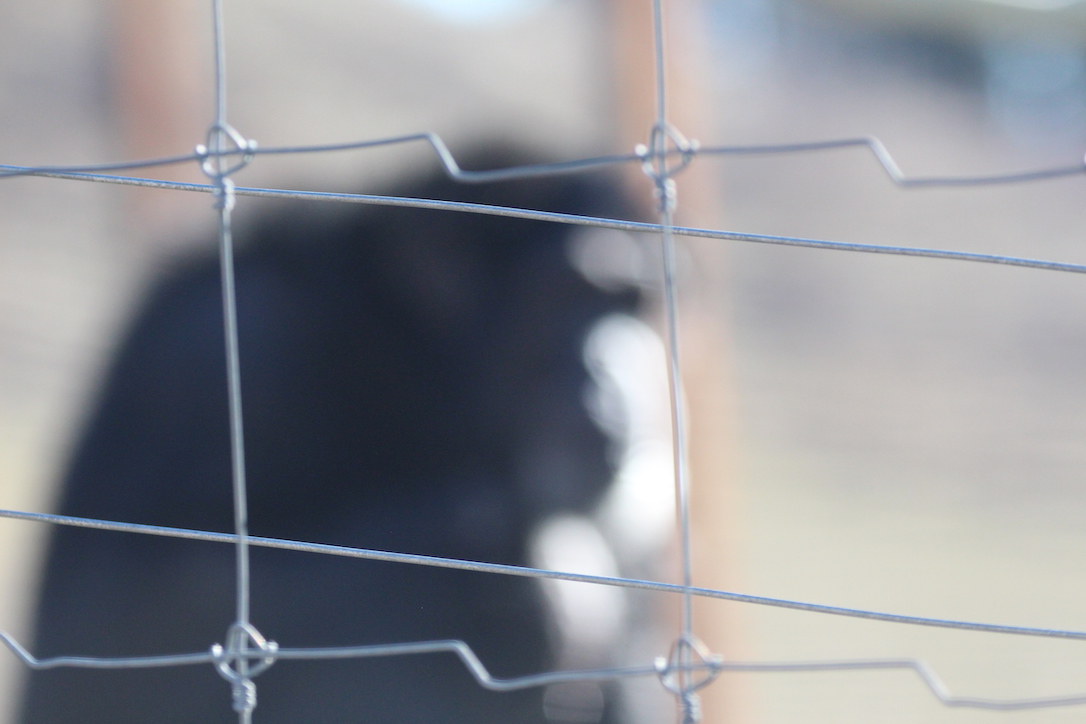
But our eyes perform the same trick. This is roughly where Willy B was looking in the photos above and exactly what that hillside looked like to my eyes too.
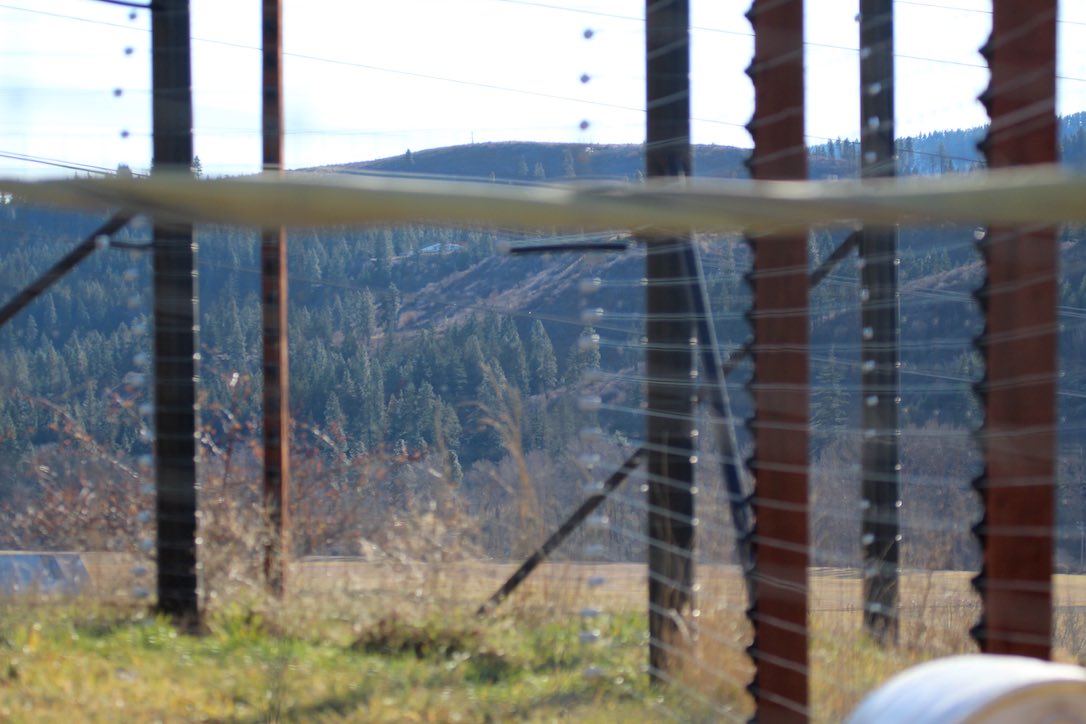
We love sharing the sanctuary with loyal supporters and new interested folks too. One comment that people often make when they see a video from us for the first time on Facebook or Instagram is that the chimpanzees shouldn’t be indoors or “in a cage.”
I tried to answer this years ago in this blog post, but I felt it needed an update.
It is helpful to begin as that post did with the image of the type of cages that many of the chimpanzees at CSNW spent the majority of their lives:
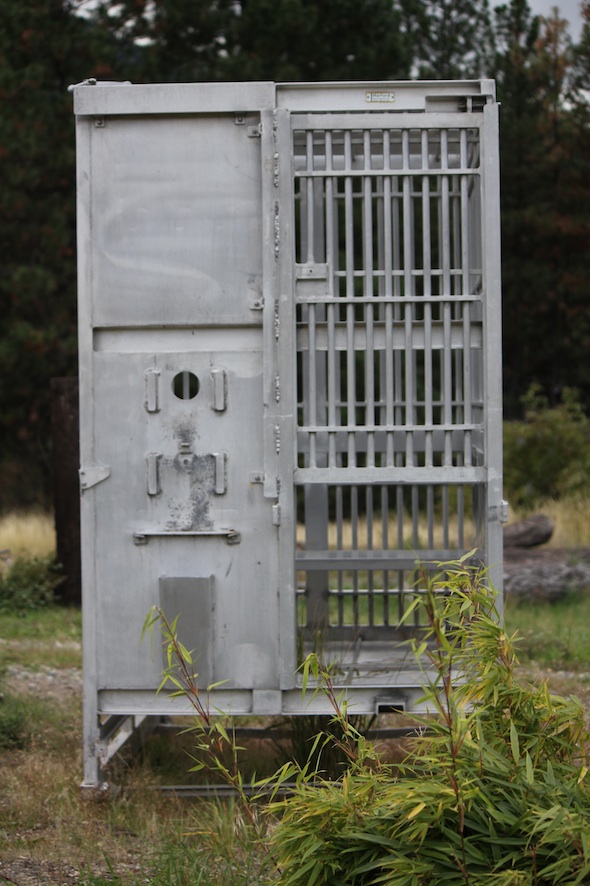
That is a cage.
At the sanctuary, there is also caging.
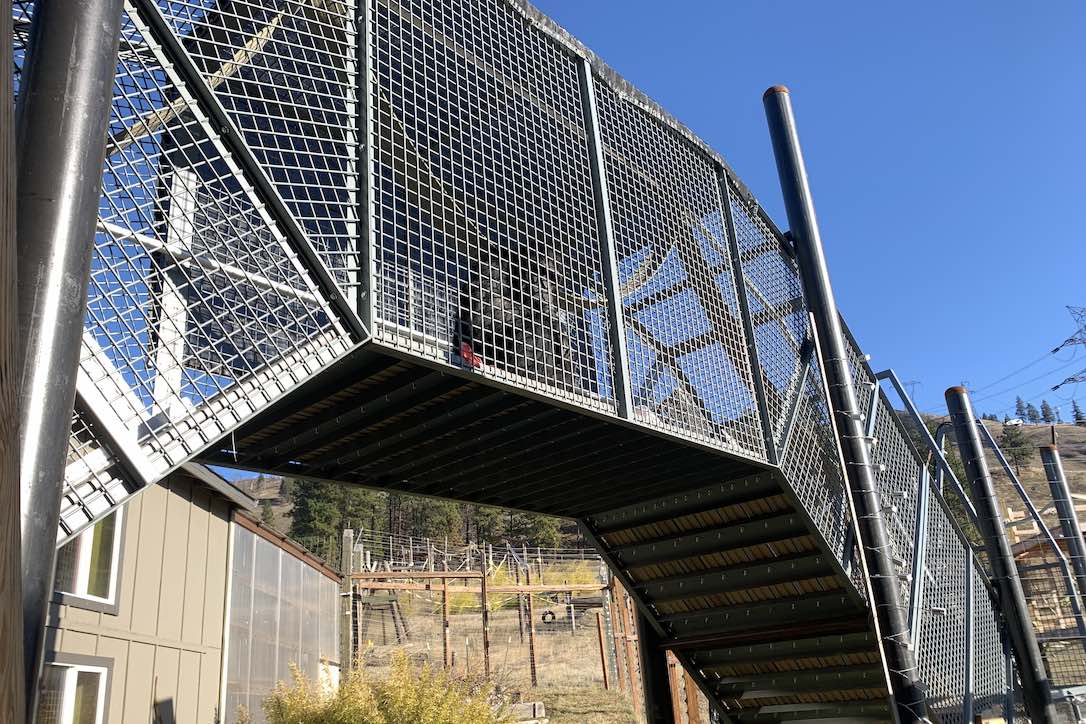
Caging makes people uncomfortable. They want to see chimpanzees outside “where they are meant to be.” They want to imagine that they are free and close to nature.
I’m not immune to it myself.
Just yesterday, I noted what a lovely afternoon it was and tried to implore Jamie to go outside. The voices of my parents echoed in my head as I said, “you should be outside, it’s beautiful.”
When my parents issued similar sentiments, I’m not sure if I ever responded out loud “well then why aren’t you outside?” If Jamie could speak, she would have been right to ask me the same question. She was perfectly happy making a nest by the window in that moment.
We all have individual preferences, and how we want to spend our time can change from one moment to the next. The chimpanzees are the same.
They like different spaces for a multitude of reasons. I hope the video above illustrates both the utility of caging and also how the chimpanzees might view it differently than we do; without all of the symbolism that we humans put on it.
It took us a little more than three years from the time Negra, Burrito, Jamie, Foxie, Missy, Annie, and Jody arrived to give them Young’s Hill – their two-acre habitat surrounded by double electric fences.
In those three years, the chimps were not unhappy. They played, foraged, nested, and spent lots of time in the indoor/outdoor greenhouse.
We knew they should have more, and we wanted to see them truly “outside.”
I can’t imagine Jamie not having Young’s Hill now. She loves it. She owns it.
Negra, on the other hand, can take it or leave it. Seeing her outside in the spring, though, still takes my breath away.

We can’t get inside the heads of the chimpanzees. We can’t ask them what they are thinking. But we can observe them and watch where they choose to spend their time and how they utilize different spaces.
We can (and should) do things to encourage them to GET OUTSIDE, but it’s worth asking ourselves if we are doing that for their sake or for our own – to fulfill the vision we have of what chimpanzees in captivity should be doing instead of what they want to be doing.
These chimpanzees cannot live in the wild. Our job is to give them the best possible captive life possible, with lots of choice and variety, based on their individual needs, personalities, and quirks.
We’ll continue to blur the fencing out of some photos and put the cameras up to the caging for an unobstructed view, but it’s not because we want you to forget that it’s there; it’s so you can fully see the unique and wonderful chimpanzees who are choosing to do whatever they are doing in the moment when the camera shutter closes.






My family spent yesterday at our local zoo. It was sunny yet chilly outside. We stood and watched as the chimpanzees were let outside. Food was scattered all over their enclosure. Some of them chose to come out, others did not. Of those that came out, they gathered some food and headed straight back inside. Animals are not stupid. If you give them access to heat or air conditioning, blankets, soft bedding etc, they’re going to take it. Yesterday the chimps decided they didn’t want to be cold, and the food wasn’t worth staying out for. Before we left for the day, we stopped by their enclosure again, and not one of them was outside, and all the food that had been left was still there. Good for them for choosing to go back inside and be warm.
That was expressed and demonstrated perfectly Diana. Being in captivity has to be challenging but you all go to great extremes to ensure that the needs of each individual is met and beyond. The Resources link to your enrichment data base proves how creative and caring you are! I am looking forward to the completion of the new building. How will the CA Gang react to all this new space? Time will tell….it’s so exciting.
I had a school teacher who had a chimp as a pet, and occasionally he came to class tp visit us. I worried about his circumstances at “home”. Way back then, 1970 folks didn’t think ahead about exotic pets. The teacher was in his 20’s and single at the time… I wondered over the years if he married and knowing the chimpanzee would live another 50+ years. There was a cage in the garage that was his place during work hours… Young’s hill is such an amazing place, I would want to shoo all the chimps to go play outside! Willey B reminded me what courage it takes for them to be in a place without a roof.
I wonder what happened to that chimpanzee. Thank you for sharing that.
God bless you all for giving these Chimps this wonderful home. These are not cages of oppression or cruelty. These are lovely homes!
An important consideration for anyone with the perception that “caging” is a negative is this…”Caging” is the safety net keeping these chimps alive and healthy. Since they do not have the skills to live truly “in the wild” caging is what keeps them safe.. as well as the people who care for them. Consider what their fate would be at the hands of humans if there was no caging.. As CSNW has for many years so carefully given us the full picture… this is pure home, sanctuary, love and safety for the fortunate chimpanzee people who live there. Thank you to you all.
I like – caging is the safety net. Thank you, Judy.
Diana, thanks so much for this wonderful post! I also went back to the link from 11/15 that you embedded and learned a lot from it, too. I’m so grateful that the chimps have these wonderful spaces you and the team have created for them and for those to come in the future, and how much thought is put into how their spaces are designed and the protections built in for them and for caregivers. Not to mention the level of care and enrichment they receive overall. Food puzzle anyone? Foraging for watermelon? The work all of you do is truly a labor of love and it shows. They’re thriving in all the ways they are able. Not surviving, but actually thriving. Tears of gratitude to you all.
Thank you, Marya. I appreciate that you took the deep dive and read that older post too!
This post is simply and absolutely amazing. Thank you, Diana.
Thank you, Diane!
I’ve been into rescue almost all of my adult life, of animals mostly domestic but sometimes wild as well. I’ll have people call me and say their neighbor has a dog that “needs rescuing”. I ask about the situation and they’ll say “These people let their dog outside, to go potty, and sometimes it’s out there for hours at a time.” I ask if they have a fence and the answer is “Yes.” I ask if the dog has water outside and the answer is “Yes.” I ask if the dog is left outside for hours in inclement weather and the answer is “No.” So I tell them it doesn’t sound like the dog needs rescuing. People, in general, have no idea what abuse is. They’ve never seen what I’ve seen…. thank goodness. The same goes for all the folks who complain about the “caging” at your sanctuary. My gawd, they have no idea how bad things could be for these precious chimps… and what a haven of heavenly treatment that the sanctuary is to them. xoxo